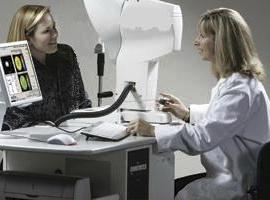FAQ
What is the difference between food allergy and food intolerance?
Food allergy causes an immune system response, causing symptoms in patient that range from uncomfortable to life threatening. Food intolerance does not affect the immune system, although some symptoms may be the same as in food allergy. True food allergy involves an interaction between IgE and the proteins in a particular food. IgE-mediated allergy can lead to severe or potentially fatal reactions called anaphylaxis. This is why you may hear food allergy referred to as anaphylactic food allergy. Food allergies are most common in the first 3 years of life. The vast majority of food allergy reactions are caused by a relatively small number of foods. These foods are cow's milk, egg, soy, wheat, peanut, tree nuts, fish, and shellfish. In children, the most common food allergy is to cow's milk followed by egg and peanut. In adults, the majority of reactions are caused by peanut, tree nuts, fish, and shellfish. Food allergy appears to be increasing in prevalence.
What's the treatment for food allergy?
There is no medication to prevent food allergy. The goal of treatment is to avoid the foods that cause the symptoms. After seeing your allergist and finding which foods you are allergic to, it is very important to avoid these foods and all their traces in other prepared food especially if they are packed. If a mother is breastfeeding her child, it is important to avoid foods that her child is allergic to in her diet. Small amounts of the food allergen may be transmitted to child through her breast milk and cause a reaction. It is also important to give vitamins and minerals to the patient if he/she is unable to eat certain foods and their delivered. For subjects who have had a severe food reaction, your allergist may prescribe an emergency kit that contains epinephrine, which helps stop the symptoms of severe reactions.
What is atopic dermatitis?
Atopic dermatitis is a skin condition. It is a subtype of eczema that has allergy as a major contributor. It is almost exclusively seen in young infants and children. Almost 85% patients have had signs and symptoms of the disease in the first year of life. The good new is that more than half will resolve the condition by the time the child becomes two years of age. The remainder may see the end of the condition during the teenage years; while a few will persist into adulthood. They seem to be triggered by a number of things. The major contribution has been given by allergists is the association of foods with this condition. These foods include egg, wheat, soy, cow's milk, peanut, and fish. Some of these children may follow an allergy pathway and develop allergic rhinitis and asthma in time.
What is Anaphylaxis?
Anaphylaxis is a serious allergic reaction that is rapid in onset and may cause death. It is a condition caused by an IgE-mediated reaction. The most common triggers include food, medication, insect stings, and latex. How to treat it? Any delay in the recognition of the initial signs and symptoms of anaphylaxis can result in a fatal outcome either because of airway obstruction or vascular collapse. Epinephrine is the only medication that can reverse severe anaphylactic symptoms. The child's physician should provide guidance for when and how much epinephrine to use if a reaction occurs. All subjects who require epinephrine should be seen promptly in the emergency room.
What is Asthma?
Asthma is one of the most common chronic diseases of childhood. One out of every 10 children has asthma and this number continues to rise. Asthma is a chronic inflammatory lung disease that can cause repeated episodes of cough, wheezing and breathing difficulty. To understand and avoid environmental exposures that may worsen asthma, such as dust mites, pollen, mold, animal dander and tobacco smoke is very important. How to treat it Long-term control medications: prevent symptoms, often by reducing inflammation. Must be taken daily. Do not expect them to give quick relief Quick-relief medications: relax airway muscles to provide prompt relief of symptoms. Do not expect them to provide long-term asthma control




